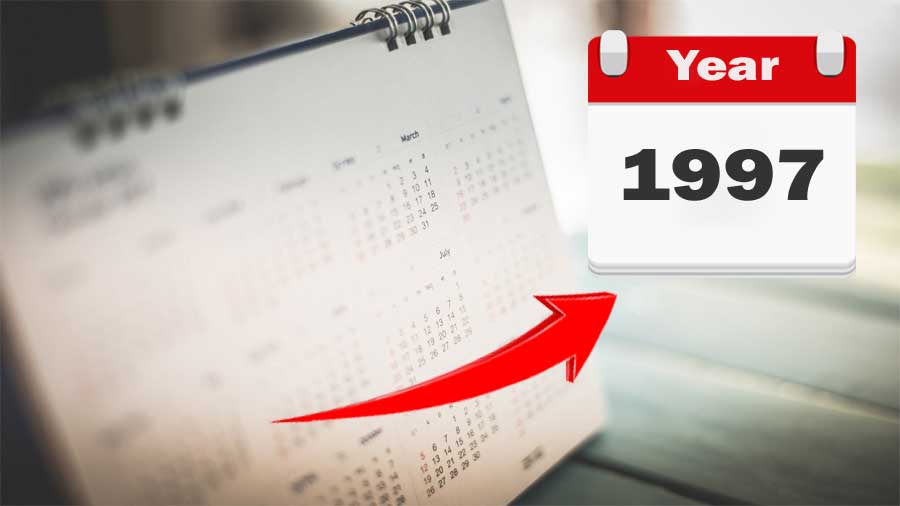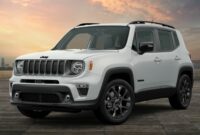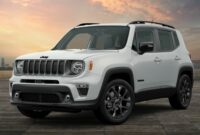1997 Jeep TJ For Sale: Your Comprehensive Guide to Buying and Selling an Icon sale.truckstrend.com
The rumble of its inline-six engine, the iconic round headlights, and the promise of open-air freedom – few vehicles embody adventure quite like the Jeep Wrangler. Among its revered lineage, the 1997 Jeep TJ holds a special place. As the inaugural year for the TJ generation (1997-2006), it introduced the revolutionary coil-spring suspension, transforming the Wrangler’s on-road manners while retaining its legendary off-road prowess. For enthusiasts, off-roaders, and those seeking a slice of automotive Americana, a 1997 Jeep TJ for sale isn’t just a vehicle; it’s an opportunity to own a robust, highly customizable, and increasingly classic piece of history.
This comprehensive guide will navigate the intricacies of finding, evaluating, buying, and even selling a 1997 Jeep TJ, ensuring you’re well-equipped to make an informed decision in this unique market.
1997 Jeep TJ For Sale: Your Comprehensive Guide to Buying and Selling an Icon
The Enduring Appeal of the 1997 Jeep TJ
When the 1997 Jeep TJ rolled off the assembly line, it marked a significant evolution for the Wrangler nameplate. Replacing the leaf-sprung YJ, the TJ adopted a Quadra-Coil suspension system, borrowed heavily from the Grand Cherokee (ZJ). This innovation dramatically improved ride comfort and handling dynamics, making the TJ a more palatable daily driver without compromising its formidable capabilities on the trails.
Key features that contribute to the 1997 TJ’s lasting appeal include:
- Robust Powertrain: The venerable 4.0-liter AMC 242 inline-six engine is legendary for its bulletproof reliability, ample torque, and ease of maintenance. While a 2.5-liter four-cylinder was also available, the 4.0L is the more sought-after option.
- Off-Road Prowess: Solid axles (Dana 30 front, Dana 35 or optional Dana 44 rear), a sturdy ladder frame, and impressive articulation thanks to the coil springs make the TJ a natural-born off-roader right out of the box.
- Customization Heaven: The aftermarket support for the TJ is immense. From lift kits and larger tires to heavy-duty bumpers and winches, virtually any modification you can dream of is available, allowing owners to tailor their Jeep to specific needs or aesthetic preferences.
- Simplicity and DIY Friendliness: Unlike modern, electronically complex vehicles, the 1997 TJ is mechanically straightforward. This makes it a fantastic platform for those who enjoy working on their own vehicles, reducing maintenance costs and fostering a deeper connection with the machine.
- Timeless Aesthetics: With its return to the classic round headlights, the TJ recaptured the iconic look that defines the Wrangler, blending heritage with modern (for its time) design.

For these reasons, the 1997 Jeep TJ remains a highly desirable vehicle, whether you’re looking for a weekend trail rig, a fun summer cruiser, or a practical daily driver with character.

What to Look For When Buying a 1997 Jeep TJ
Purchasing a vehicle that’s over two decades old requires a keen eye and a thorough inspection. A 1997 Jeep TJ, especially one that has seen off-road action or lived in a rust-prone region, will have specific areas of concern.
1. The Rust Monster: Your Biggest Enemy
Rust is, without a doubt, the most critical factor when evaluating a TJ. It can turn a seemingly good deal into a money pit.
- Frame: Inspect the frame meticulously, especially around the skid plate mounts, control arm mounts, body mounts, and the rear sections near the bumper. Look for bubbling, flaking, or even holes. Tap areas with a hammer to check for thin spots. Pay close attention to where the control arms attach to the frame, as this is a common failure point.
- Body: Check the floorboards (lift the carpet!), rocker panels, fenders (especially where they meet the body), and the cowl area beneath the windshield. Rust here can be costly to repair.
- Tub: Look under the carpet in the passenger footwells and cargo area.

2. Engine and Drivetrain Health
While the 4.0L is robust, common issues can arise:
- Oil Leaks: The rear main seal is notorious for leaking. While not always critical, it’s a messy repair. Also check valve cover gaskets and oil pan.
- Cooling System: Inspect the radiator, hoses, water pump, and thermostat housing for leaks or corrosion. Overheating is a TJ’s enemy.
- Transmission:
- Manual (AX-15/NV3550): Check for smooth shifts, no grinding, and a healthy clutch. Listen for bearing noise.
- Automatic (32RH/42RLE): Check fluid color (should be red, not brown or burnt), smell, and ensure smooth engagement and shifts.
- Transfer Case (NP231/NP241): Check for leaks, ensure it shifts smoothly into 2WD, 4-High, and 4-Low without binding or excessive noise.
- Axles: Inspect differential covers for leaks, check universal joints (U-joints) on the driveshafts and front axle shafts for play or clicking. Look for excessive play in the pinion or wheel bearings.
3. Suspension and Steering Components
- Worn Components: Bushings, ball joints, tie rod ends, and track bar bushings are common wear items. Check for play.
- Lift Kits: Many TJs are lifted. Assess the quality of the lift kit components and installation. Poorly installed lifts can lead to handling issues, premature wear, and the dreaded "death wobble."
- Shocks: Look for leaks or excessive bounce.
4. Electrical and Interior
- Wiring: TJs can develop electrical gremlins, especially in the dashboard. Check all lights, gauges, power windows (if equipped), and HVAC.
- Interior Condition: Assess seat condition, carpet, and dashboard. Check for water leaks, especially around soft top seals or windshield.
- Soft Top/Hard Top: Evaluate the condition of the top – tears, clarity of windows, functionality of zippers and latches. A good condition hardtop adds significant value.
5. Aftermarket Modifications
Be wary of heavily modified TJs unless you specifically want those modifications. Assess the quality of the work. Are welds clean? Are components from reputable brands? Poorly executed modifications can cause more problems than they solve.
Navigating the 1997 Jeep TJ Market
Finding the right 1997 Jeep TJ for sale requires patience and diligence.
Where to Look:
- Online Marketplaces: Facebook Marketplace, Craigslist, eBay Motors, and AutoTrader are popular choices. Filter by year and model.
- Dedicated Jeep Forums/Groups: Online communities often have classified sections where enthusiasts sell well-maintained or unique TJs.
- Local Dealerships: Less common, but some independent used car dealers or off-road shops might have them.
- Word-of-Mouth: Let friends and family know you’re looking.
Setting a Realistic Budget:
Remember that the purchase price is just the beginning. Factor in:
- Insurance: Older vehicles can sometimes be cheaper to insure, but modified ones might be more.
- Maintenance: Even a well-maintained TJ will need routine upkeep.
- Potential Repairs: Budget for unexpected fixes, especially if you’re buying a project.
- Modifications: If you plan to customize, set aside a separate budget.
Practical Advice for Buyers:
- Always Get a Pre-Purchase Inspection (PPI): If you’re not a mechanic, pay a trusted independent mechanic specializing in Jeeps or 4x4s to inspect the vehicle. This small investment can save you thousands.
- Ask for Service Records: A seller who can provide a detailed maintenance history is a good sign.
- Test Drive Thoroughly:
- Listen for unusual noises (clunks, grinding, squeals).
- Check braking performance – does it pull to one side?
- Assess steering for excessive play or wander.
- Engage 4WD (both high and low range) in a safe, unpaved area to ensure it works correctly.
- Check all lights, wipers, and gauges.
- Be Prepared to Walk Away: Don’t let emotion cloud your judgment. If something feels off or the seller is evasive, move on. There will always be another TJ.
Selling Your 1997 Jeep TJ
If you’re on the other side of the transaction, preparing your TJ for sale can maximize its appeal and value.
1. Preparation is Key:
- Clean Thoroughly: Detail the interior and exterior. A clean vehicle makes a strong first impression.
- Address Minor Issues: Fix small, inexpensive problems like burnt-out bulbs, non-functioning wipers, or minor fluid leaks. These show care and prevent buyers from nitpicking.
- Gather Documentation: Compile service records, modification receipts, and the clear title.
- Check Fluids and Tires: Ensure all fluids are at proper levels and tires are properly inflated and have decent tread.
2. Photography and Listing:
- High-Quality Photos: Take clear, well-lit photos from multiple angles (exterior, interior, engine bay, undercarriage if it’s rust-free). Highlight any desirable modifications.
- Honest and Detailed Description: Be transparent about the vehicle’s condition, including any known flaws (e.g., "minor frame rust near skid plate," "rear main seal seeps"). List all features, modifications, and recent maintenance. Explain why you’re selling.
3. Pricing Your TJ:
- Research Comparables: Look at similar 1997 TJs for sale in your area (same engine, transmission, general condition, mileage, and modifications).
- Be Realistic: A pristine, low-mileage, rust-free TJ will command a premium. A rusty project will not. Adjust your price based on its actual condition.
4. Showing the Vehicle and Paperwork:
- Be Safe: Meet in a public place. If allowing a test drive, accompany the buyer.
- Be Patient: Buyers will have many questions. Be prepared to answer them honestly.
- Prepare Paperwork: Have the title ready to sign over, and create a bill of sale that includes the VIN, mileage, date, sale price, and buyer/seller information. Both parties should sign.
1997 Jeep TJ Estimated Price Guide
The price of a 1997 Jeep TJ can vary wildly depending on its condition, mileage, modifications, engine, transmission, and geographic location (rust belt vs. dry climate). The 4.0L inline-six engine typically commands a higher price than the 2.5L four-cylinder. Hardtops also generally add value.
Here’s an estimated price range for a 1997 Jeep TJ for sale in the current market (USD), assuming a 4.0L engine:
| Condition Category | Estimated Price Range (USD) | Key Characteristics & Considerations |
|---|---|---|
| Project/Poor | $3,000 – $6,000 | Significant frame or body rust, major mechanical issues (non-running or barely), high mileage, may need full restoration. |
| Fair | $6,000 – $9,000 | Drivable, but noticeable rust (surface to moderate), needs various repairs/maintenance (e.g., suspension, leaks), higher mileage (150k+). |
| Good | $9,000 – $14,000 | Well-maintained, minimal to no significant rust, good mechanical condition, moderate mileage (100k-150k), minor cosmetic flaws. |
| Excellent/Modified | $14,000 – $25,000+ | Low mileage (under 100k), rust-free, pristine interior/exterior, comprehensive service history, desirable factory options (e.g., Dana 44 axles), or professionally installed, high-quality modifications (e.g., expensive lift, regeared axles). |
Disclaimer: These prices are estimates only and are subject to change based on market demand, specific vehicle features, and regional variations. Always consult local listings for the most accurate pricing.
Frequently Asked Questions (FAQ) about the 1997 Jeep TJ For Sale
Q1: Is the 1997 Jeep TJ a good first Jeep for a new off-roader?
A1: Absolutely. Its robust construction, relatively simple mechanics, vast aftermarket support, and forgiving coil-spring suspension make it an excellent platform for learning about off-roading and vehicle maintenance.
Q2: What’s the best engine for a 1997 TJ?
A2: The 4.0-liter AMC 242 inline-six is overwhelmingly preferred. It offers superior power, torque, and legendary reliability compared to the 2.5-liter four-cylinder, especially if you plan on running larger tires or tackling challenging trails.
Q3: How much rust is too much when buying a 1997 TJ?
A3: Any significant rust on the frame (holes, delamination, or severe rot around control arm mounts) is a major red flag and can be a deal-breaker, as repairs are extremely costly and often not worth it. Surface rust is manageable, but deep, flaking rust on the body or frame should be viewed with extreme caution.
Q4: Are parts hard to find for a 1997 TJ?
A4: No, parts are incredibly easy to find. Due to the TJ’s popularity and long production run (1997-2006), the aftermarket is flooded with new, used, and upgraded components. Most standard maintenance items are also readily available at any auto parts store.
Q5: What is "death wobble" and how do I fix it?
A5: Death wobble is a violent, uncontrollable shaking of the front end, typically triggered by hitting a bump at speed. It’s often caused by worn or loose steering and suspension components (e.g., track bar, tie rod ends, ball joints, control arm bushings). Fixing it involves diagnosing and replacing the worn parts, often starting with the track bar. It’s a common issue, but generally solvable.
Q6: What’s the average lifespan of a TJ?
A6: With proper maintenance and rust prevention, a 1997 Jeep TJ with the 4.0L engine can easily last 200,000 to 300,000 miles or more. The engine itself is known to be incredibly durable, often outlasting other components if cared for.
Q7: Can I daily drive a 1997 TJ?
A7: Yes, many people daily drive TJs. The coil-spring suspension makes it much more comfortable than its YJ predecessor. However, TJs are not known for their fuel economy, quiet ride, or luxury features. They are rugged and capable, which means a certain level of compromise for daily commuting.
Conclusion
The 1997 Jeep TJ stands as a testament to timeless design, rugged capability, and mechanical simplicity. Whether you’re a first-time Jeep owner or a seasoned enthusiast, acquiring a 1997 Jeep TJ for sale offers a unique blend of adventure, customization potential, and a tangible connection to an iconic automotive legacy. By approaching the buying or selling process with careful research, thorough inspection, and realistic expectations, you can ensure a successful transaction and many years of open-air freedom behind the wheel of this beloved American classic. Happy Jeeping!



